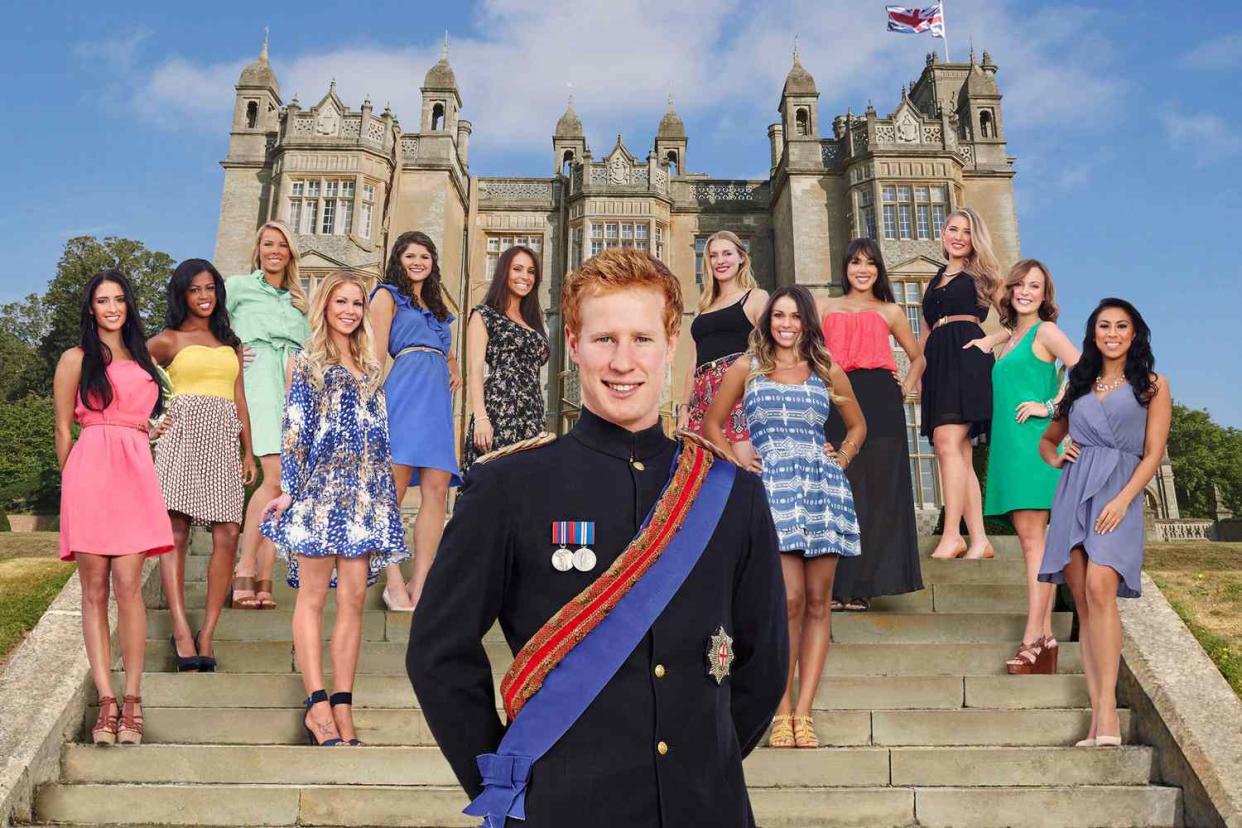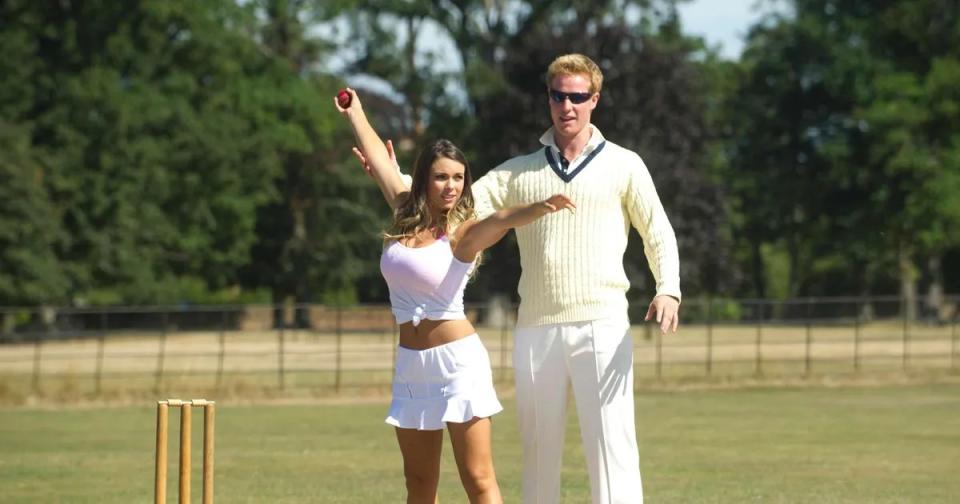‘I Wanna Marry Harry’ Stretched The Limits of Reality TV

It seems inconceivable in an age when every facet of Prince Harry’s celebrity marriage and Shakespearean sibling rivalry is meticulously scrutinized by every man and his corgi, but 10 years ago, there were apparently a dozen young American women who couldn’t pick Prince Harry out of a line-up.
That’s what the 2010s’ most intelligence-insulting reality show “I Wanna Marry Harry” — the lone season of which concluded June 11, 2014 — expected us to believe anyway. Never mind that the self-proclaimed ‘spare’ was then third in line to the throne and, thanks to his penchant for playing strip billiards in Las Vegas hotels, a long-running tabloid favorite. Just recruit a vague posh boy lookalike, dye his hair ginger, and provide a crash course in etiquette and croquet, and voila, no aspiring princess would be any the wiser.
More from IndieWire
The eight-part Fox original was essentially an aristocratic take on “Joe Millionaire,” arguably the genesis for the subgenre of ‘deceitful dating shows’ that also included “Average Joe” and “Playing It Straight.” The bachelorettes on this occasion were not only manipulated into accepting their potential suitor had an eye-watering bank balance, though, but that he was a prominent member of the British Royal Family, too.
And the show went to ridiculous lengths to maintain the facade, interrupting dates with staged paparazzi ambushes, security protocols, and shout-outs from passers-by, while also Photoshopping family pictures conveniently placed around Englefield House, the Elizabethan country mansion that, ironically, would later be used for “The Crown.”
Producers were even more disingenuous behind-the-scenes. According to various post-show interviews, the girls were essentially kept in solitary confinement the week beforehand to ensure their guards were let down and banned from talking to each other in-between filming to help quell any suspicions. Once they were explicitly told the bachelor was Prince Harry in Episode 5 —prior to that, he was only ever referred to as ‘Sir’ — any skeptics were gaslit by fake therapists to stop the penny from dropping.
Such extreme tactics didn’t have the desired result, however. Only one contestant, naive Alabama hostess Kelley, fully believed the idea a British prince would resort to a “Bachelor” knock-off to find his soulmate. The rest ranged from hesitant acceptance and tentative theories (“For all we know, he could be the Pauly D of England”) to flat-out debunking.

While the show put a lot of effort into its logistics, it completely botched the aspect that mattered the most. Matthew Hicks, a then-23-year-old environmental consultant, may have loosely resembled Harry if you squinted from a distance (the 99% dead ringer claims was arguably the show’s biggest stretch). But devoid of any natural charm or, more significantly, any acting experience, he’s about as charismatic as a commemorative plate.
Indeed, without being too unkind (Matthew seems a relatively nice guy, often expressing guilt for all the hoodwinking), his ‘deer caught in the headlights’ demeanor immediately sucks all life out of proceedings every time he takes center stage. Which is a major problem when you’re the leading man.
In fact, the show’s biggest ask isn’t to buy that 12 girls would mistake a complete unknown for the world’s most famous playboy, it’s that any would fall for someone they’d so quite easily eat alive. Matthew spends most of his screentime aghast at the culture shock he’s willingly signed up to experience (“You Americans are loud” is a regular passive-aggressive comment). And whether he’s dating a pre-school teacher, cocktail waitress, or the reigning Miss Los Angeles, there’s never a shred of chemistry to be found.
Admittedly, poor Matthew is hampered by the fact he can’t stray from the “Prince Harry for Dummies” guidebook he’s instructed to study. For half the series, he can’t answer any question with any kind of specificity, meaning most one-to-ones end in conversational cul-de-sacs such as “That’s for me to know and you to find out.” It must have been exhausting for both parties, but for viewers, it’s also mind-numbingly tedious.
This could have been compensated for had there been major fireworks with each big reveal. But even when eliminated, most contestants aren’t shown learning the truth about the man they’ve been primed to fawn over. Only two are afforded this luxury, although the aptly-named Meghan claims her ‘confrontational’ response was assembled from various other scenes. And winner Kimberly’s underwhelmed reaction didn’t even air on TV: the show was yanked from the schedules after just four episodes (the remainder surfaced online).
Inevitably, Matthew and Kimberly didn’t get the fairytale ending the closing moments purported. Although they remained cordial, their post-show interactions remained purely promotional, meaning the series was equally ineffective as a quest for love as it was a prime-time ratings grabber. No doubt the cool $250,000 the pair received softened the blow. Remarkably, though, everyone involved appears to have survived the whole experience unscathed and without any regrets.
Ultimately, “I Wanna Marry Harry” feels more like a relic from the wild west of early ‘00s reality TV, when everything from plastic surgery to paternity tests were fair game in the name of entertainment. It’s far from the most unethical culprit (hello “The Swan” and “Who’s Your Daddy?”) But in a cardinal sin for the genre, it’s perhaps the most banal.
Best of IndieWire
The 14 Best Thrillers Streaming on Netflix in June, from 'Fair Play' to 'Emily the Criminal'
Unsimulated Sex Scenes in Film: 'Nymphomaniac,' 'The Brown Bunny,' 'Little Ashes,' and More
Every Palme d'Or Winner from the Cannes Film Festival, Ranked
Sign up for Indiewire's Newsletter. For the latest news, follow us on Facebook, Twitter, and Instagram.

 Yahoo News
Yahoo News 
